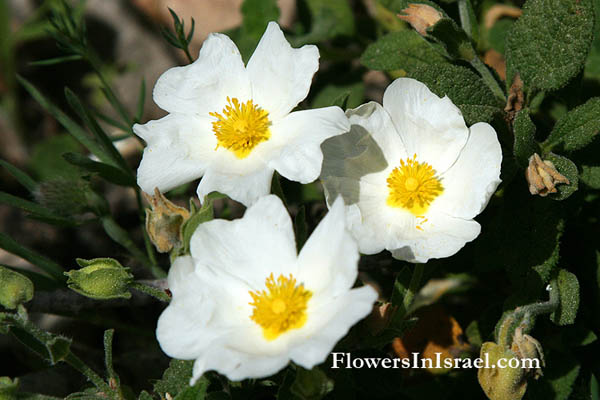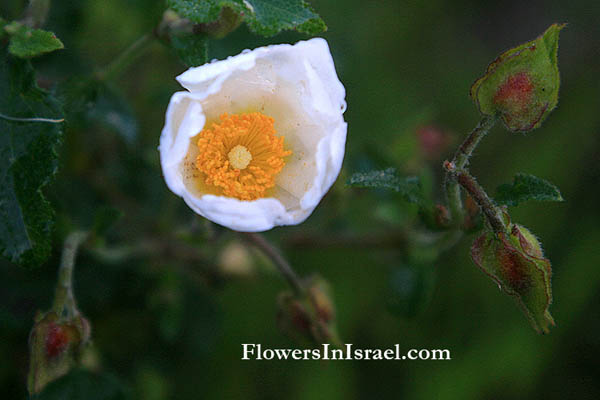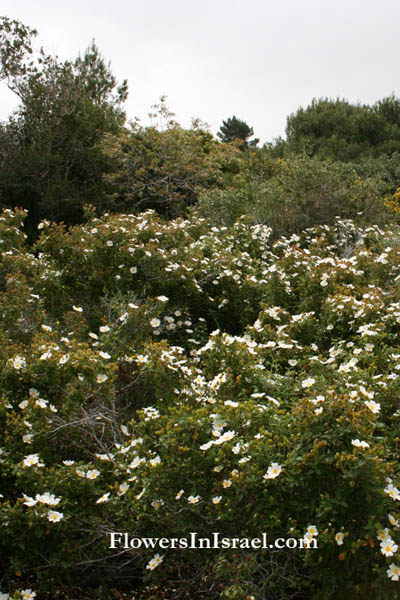Hebrew: לוטם מרווני, Arabic: لبّـاد أبيض
| Scientific name: | Cistus salviifolius L. | |
| Common name: | White Rockrose, Sage-leaved Cistus | |
| Hebrew name: | לוטם מרווני | |
| Arabic name: | لبّـاد أبيض | |
| Plant Family: | Cistaceae, לוטמיים |

|
| Life form: | Chamaephyte | |
| Stems: | 30-60 cm high; spreading, hairs long, in short, stellate clumps, or glandular | |
| Leaves: | Opposite, entire | |
| Flowers: | White | |
| Fruits / pods: | Loculicidal capsule | |
| Flowering Period: | March, April, May, June | |
| Habitat: | Batha, Phrygana | |
| Distribution: | Mediterranean Woodlands and Shrublands, Semi-steppe shrublands, Montane vegetation of Mt. Hermon | |
| Chorotype: | Mediterranean | |
| Summer shedding: | Perennating |

Derivation of the botanical name: Cistus, from kisthos or kistos, "the rock-rose" (Carl Linnaeus). salviifolius, salvia, "sage" and folius, "leaves"; with leaves like those of that (sage) genus. The Hebrew name Hebrew לוטם, lotem , Aramaic לוטמא, lotma, is identified with Greek ladanos and Latin ladanum, the rockrose - an evergreen shrub of the Cistus genus. In Israel we can find the Cistus incanus/ creticus/ villosus and the Cistus salviifolius. The Cistus ladaniferus that produces the much coveted resin, does not grow in Israel. Ladanum resin was sought after for its aromatic properties as incense, but mostly as medicine. The two references in Book Genesis of the Hebrew word Lot (לוט), is wrongly translated "myrrh". Myrrh is not indigenous to Gilead or Israel. "Lot" (לוט), ledum, ladanum, laudanum, a fragrant resinous gum, collected from the leaves of the Cistus, is the material referred to. Ladanum is used in herbal medicine and as a perfume ingredient.
Bible resources:


Location: Carmel mountains |